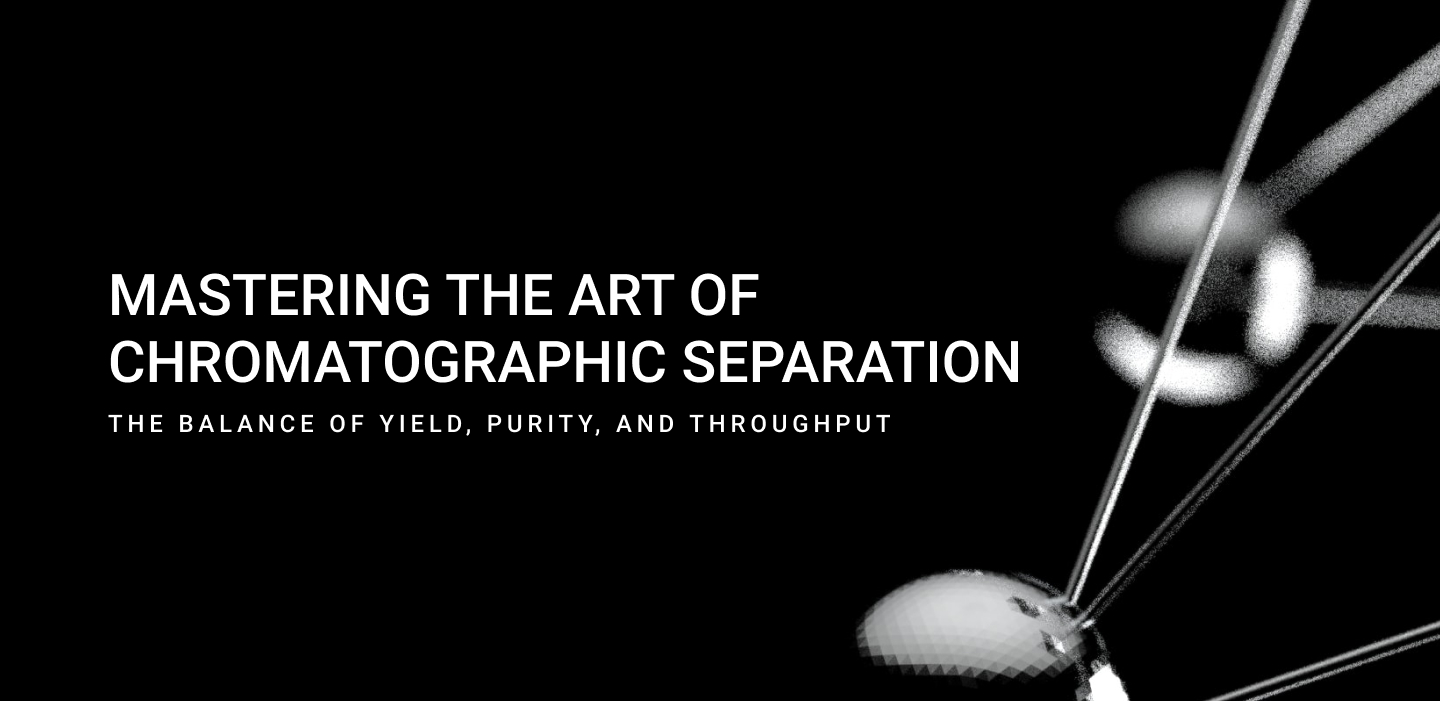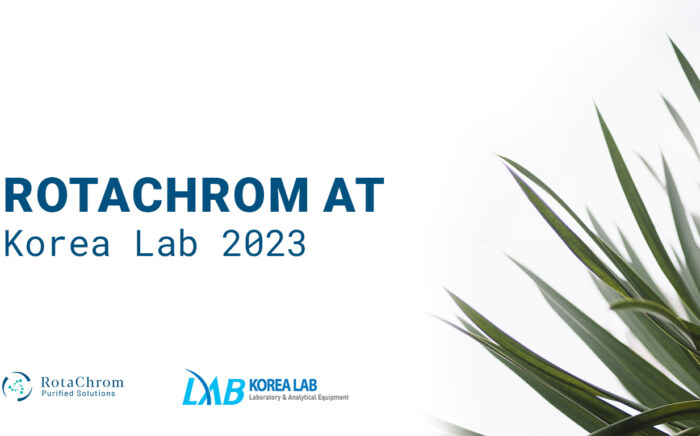Increasing separation efficiency by pH adjustment in Centrifugal Partition Chromatography
NewsChromatographic techniques play a pivotal role in separating and purifying components within a mixture, presenting a key challenge for chromatographers. Striking a balance between yield, purity, and throughput is essential for successful purification. In this article, we explore the intricacies of the “chromatographer’s triangle” and delve into the factors crucial for achieving effective chromatographic separation, examining both analytical and preparative scales.
Scales of Chromatography Separation: Analytical and Preparative
Chromatography is broadly categorized into two scales—analytical and preparative. Analytical methods focus on obtaining qualitative and quantitative data about a sample, operating at smaller scales (1-10 mg sample size) and lower flow rates (0.5-2 mL/min). Preparative methods, geared toward isolating specific components or removing impurities, process larger material quantities (hundreds to thousands of grams) at higher flow rates, often in liters per minute. Achieving the goals of maximum yield, purity, and throughput is challenging in preparative chromatography due to interdependencies among these factors.
Chromatographer’s Triangle: Balancing Yield, Purity, and Throughput
In preparative chromatography, the chromatographer’s aim is to isolate the compound of interest (CoI) with maximum yield, highest purity, and in the shortest time possible. However, these goals often involve trade-offs. Increasing CoI yield may compromise purity, while enhancing purity may reduce yield due to potential CoI loss during impurity removal. Higher throughput, achieved through aggressive conditions, may impact both yield and purity. Resolving these trade-offs requires meticulous consideration of specific separation process goals and limitations.
Balancing Recovery, Throughput, and Purity
Efficient chromatographic separation hinges on balancing yield, purity, and throughput. The resolution, reflecting the system’s ability to separate components, is paramount. Analytical and preparative scales are often used in tandem throughout the purification process. Small-scale analytical separations inform method development, later scaled up for preparative separation. Fractions collected during preparative chromatography are analyzed analytically to verify compound identity and purity.
Centrifugal Partition Chromatography (CPC): A Solution to Chromatographic Challenges
Centrifugal Partition Chromatography (CPC) emerges as a promising solution to chromatographic challenges. CPC employs two immiscible liquid solvent systems, eliminating the need for solid stationary phases like silica gel. The liquid stationary phase is immobilized by a strong centrifugal force within interconnected cells attached to a rotor. This liquid-liquid chromatography technique offers versatility, simplicity, and cost-effectiveness, making it well-suited for preparative-scale purification of a wide range of compounds.
Benefits of CPC
- Liquid Stationary Phase: Eliminates the need for solid phases, reducing complexity and costs.
- Versatility: Suitable for various compounds, including small molecules and biological compounds.
- High Yield and Throughput: Ideal for preparative-scale purification with high productivity.
- Cost-Effective and Environmentally Friendly: Low sample loss, high output capacity, and reusable cells contribute to cost efficiency and sustainability.
Conclusion
Achieving successful chromatographic separation requires a meticulous balance of yield, purity, and throughput. The chromatographer’s triangle serves as a guide in navigating the trade-offs inherent in preparative chromatography. Centrifugal Partition Chromatography (CPC) emerges as a powerful and environmentally friendly alternative, offering versatility and cost-effectiveness in the pursuit of efficient compound separation and purification.



